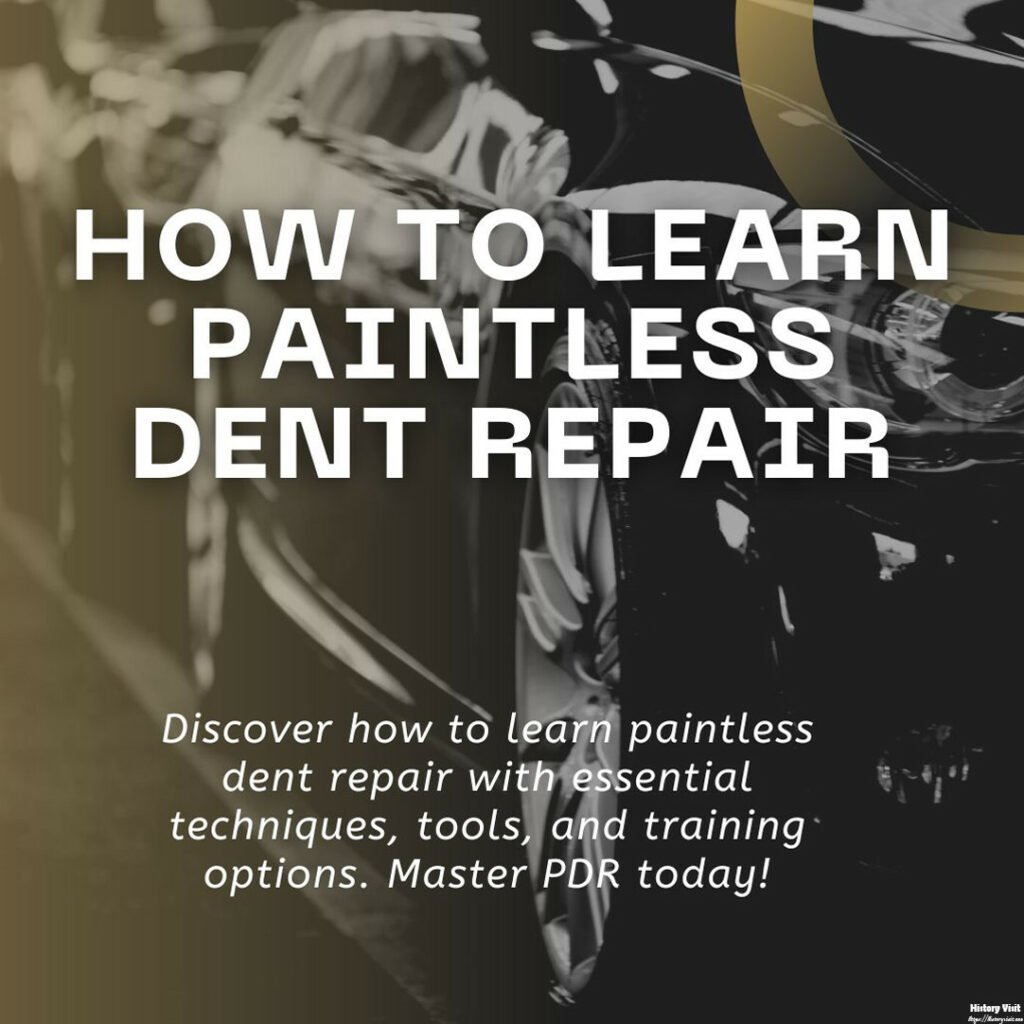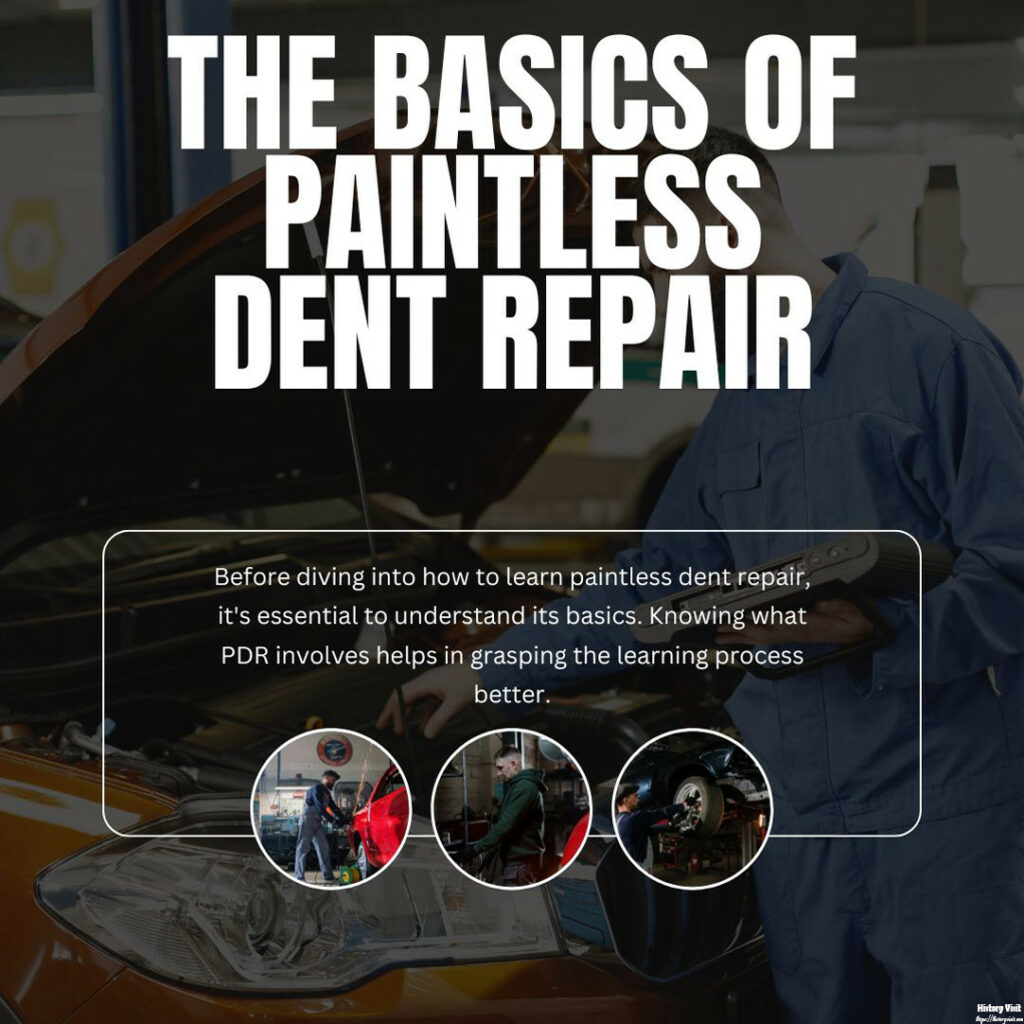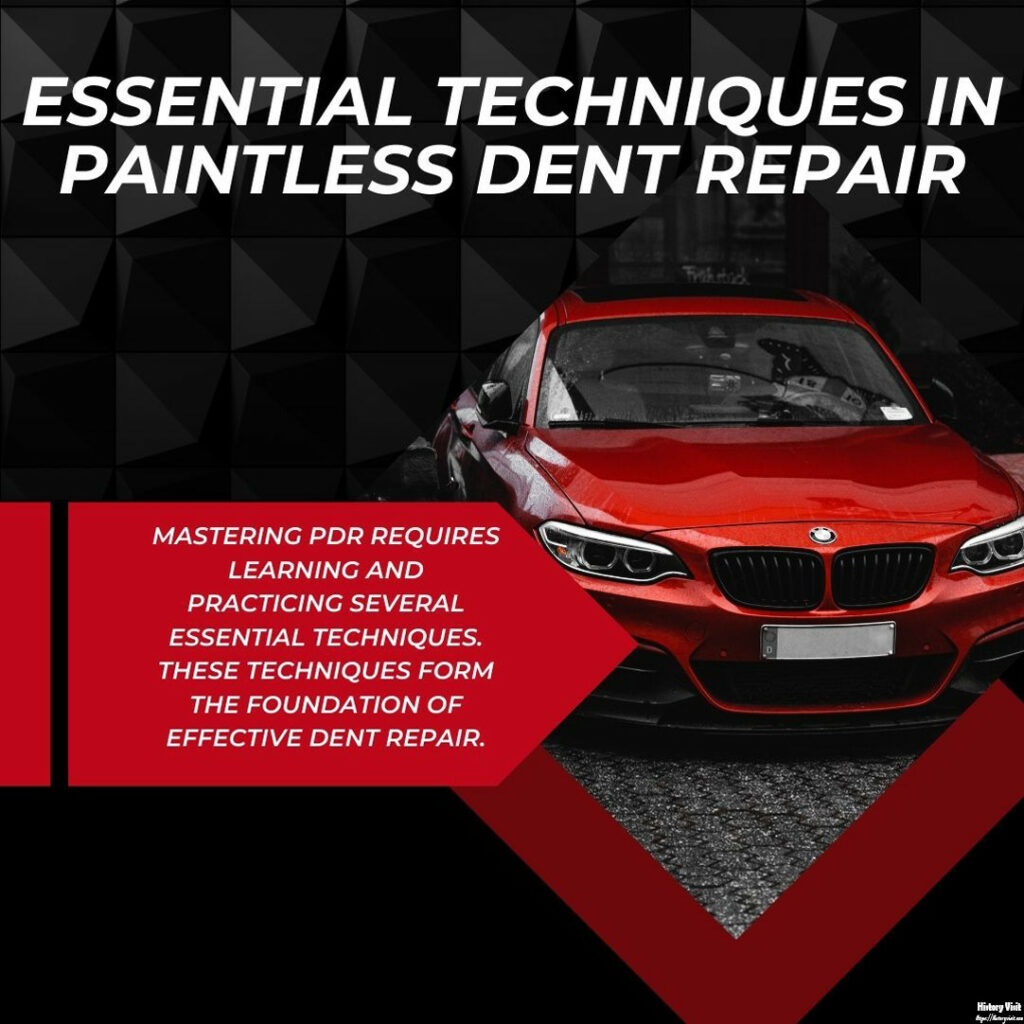How to Learn Paintless Dent Repair

Introduction (How to Learn Paintless Dent Repair)
Understanding how to learn paintless dent repair can open new career opportunities. Paintless dent repair (PDR) is a technique used to remove minor dents from a vehicle without affecting the paint. This method is cost-effective and preserves the car’s original finish. Many car owners prefer PDR because it maintains the vehicle’s value.
Learning PDR requires patience, practice, and proper guidance. With the right training and tools, anyone can master this skill. Whether you want to start a new career or save money on car repairs, learning PDR is valuable. The demand for skilled technicians in this field is growing.
In this article, we will explore how to learn paintless dent repair. We will discuss the necessary tools, training options, and techniques. By understanding these elements, you can effectively learn and excel in PDR.
The Basics of Paintless Dent Repair

Before diving into how to learn paintless dent repair, it’s essential to understand its basics. Knowing what PDR involves helps in grasping the learning process better.
What is Paintless Dent Repair?
Paintless dent repair is a method of removing dents from a vehicle without damaging the paint. It involves using specialized tools to gently push and massage the dented area back to its original shape. This technique is effective for minor dents and dings caused by hail, parking accidents, or minor collisions.
Benefits of Paintless Dent Repair
PDR offers numerous benefits. It is cost-effective because it eliminates the need for repainting. The vehicle’s original paint remains intact, preserving its value. The process is also faster than traditional dent repair methods. Most dents can be repaired within a few hours.
Limitations of Paintless Dent Repair (How to Learn Paintless Dent Repair)
While PDR is effective for minor dents, it has limitations. Severe dents, creases, or damage to the paint cannot be fixed with PDR. Also, dents located near the edge of a panel or on body lines may be challenging to repair.
Tools Used in Paintless Dent Repair
Several specialized tools are required for PDR. These include dent removal rods, glue pullers, and slide hammers. Understanding the purpose and use of each tool is crucial for effective dent repair.
How to Learn Paintless Dent Repair: Training Options

Learning PDR involves choosing the right training option. Various methods are available, each with its own set of advantages.
Professional Courses (How to Learn Paintless Dent Repair)
Attending a professional course is one of the most effective ways to learn PDR. These courses are offered by many technical schools and specialized training centers. Professional courses provide hands-on training, expert guidance, and a structured learning environment. Experienced technicians usually serve as instructors, providing valuable insights and tips.
Online Training Programs
For those who prefer learning at their own pace, online training programs are an excellent option. These programs offer video tutorials, instructional materials, and virtual support. While online programs provide flexibility, they lack the hands-on experience gained from professional courses.
Apprenticeships
Apprenticeships offer a practical approach to learning PDR. Working alongside an experienced technician provides real-world experience and mentorship. This method allows you to learn on the job and understand the nuances of dent repair. However, finding a willing mentor can be challenging.
Self-Learning
Self-learning is another option for those who prefer a more independent approach. Numerous books, online resources, and forums are available for learning PDR. This method requires a high level of dedication and discipline. Without formal training, mastering the techniques may take longer.
Essential Techniques in Paintless Dent Repair

Mastering PDR requires learning and practicing several essential techniques. These techniques form the foundation of effective dent repair.
Pushing Technique
The pushing technique involves using metal rods to push the dent out from the inside of the panel. The rod is carefully positioned behind the dent, and gentle pressure is applied to massage the metal back into shape. This technique requires precision and control to avoid over-pushing and damaging the panel.
Pulling Technique
The pulling technique is used when access to the backside of the dent is limited. Glue tabs are attached to the dented area using special adhesive. A slide hammer or pulling tool is then used to pull the dent outward. This method is effective for larger dents and areas with restricted access.
Tapping Technique
The tapping technique is used to smooth out high spots and blend the repaired area with the surrounding surface. A small tap-down tool and hammer are used to tap down any raised metal. This technique requires a light touch to avoid creating new dents.
Blending Technique
Blending involves smoothing out the edges of the repaired area to match the surrounding surface. This technique ensures that the repair is seamless and the dent is invisible. Proper lighting and reflection are essential for effective blending.
Tools and Equipment for Paintless Dent Repair (How to Learn Paintless Dent Repair)

Having the right tools and equipment is crucial for successful PDR. Each tool serves a specific purpose and contributes to the repair process.
Dent Removal Rods (How to Learn Paintless Dent Repair)
Dent removal rods are long, slender tools used to push dents from the inside of a panel. They come in various shapes and sizes to accommodate different types of dents. The rods provide leverage and control for precise pushing.
Glue Pulling Kits
Glue pulling kits include glue tabs, a glue gun, and pulling tools. The glue tabs are attached to the dent with adhesive, and the pulling tool is used to pull the dent out. This method is effective for larger dents and areas with limited access.
Slide Hammers
Use slide hammers with glue tabs to pull out dents. The hammer’s sliding weight creates the necessary force to pull the dent outward. Slide hammers are effective for larger and deeper dents.
Tap-Down Tools
Tap-down tools are small, blunt instruments used to smooth out high spots. They are used with a hammer to tap down raised metal and blend the repaired area. Tap-down tools come in various shapes and sizes for different applications.
Lighting and Reflection Boards
Proper lighting is essential for effective PDR. Reflection boards help identify high and low spots on the panel. These boards create a visual guide that highlights imperfections, making it easier to see and repair dents.
Practicing Paintless Dent Repair
Practicing PDR is essential for mastering the techniques. Consistent practice helps develop the necessary skills and confidence.
Starting with Basic Dents
Begin practicing on panels with basic, shallow dents. These are easier to repair and help build foundational skills. Focus on using the pushing and pulling techniques to remove these dents.
Progressing to Complex Dents
As you gain confidence, progress to more complex dents. Practice repairing dents with creases, body lines, and larger surface areas. This helps in developing advanced skills and techniques.
Using Practice Panels
Practice panels are excellent for honing your skills. These panels are designed for training and can be used multiple times. They provide a controlled environment for practicing different techniques and tools.
Seeking Feedback
Feedback from experienced technicians is invaluable. Share your practice results with mentors or peers for constructive criticism. Their insights can help you improve your techniques and avoid common mistakes.
Overcoming Challenges in Learning Paintless Dent Repair
Learning PDR comes with its challenges. Understanding and addressing these challenges is crucial for success.
Patience and Persistence
PDR requires patience and persistence. The learning process can be slow, and mastering the techniques takes time. Staying committed and practicing regularly is essential.
Dealing with Frustration
Frustration is common when learning a new skill. Mistakes and setbacks are part of the learning process. It’s important to stay positive and view each challenge as an opportunity to improve.
Access to Training and Tools
Access to quality training and tools can be a challenge. Investing in the right resources and seeking out reputable training programs is crucial. Networking with other technicians can provide additional learning opportunities.
Balancing Practice with Other Responsibilities
Balancing practice with other responsibilities can be challenging. Setting a regular practice schedule and staying disciplined helps in managing time effectively.
Conclusion
Learning how to learn paintless dent repair opens up valuable opportunities. PDR is a cost-effective and efficient method for removing minor dents from vehicles. The demand for skilled PDR technicians is growing.
Choosing the right training option is crucial. Professional courses, online programs, apprenticeships, and self-learning are all viable methods. Each option offers unique advantages and challenges.
Mastering essential techniques and using the right tools are key to successful PDR. Consistent practice and overcoming challenges help in developing the necessary skills. Feedback from experienced technicians and a commitment to improvement are essential.
By understanding these elements, you can effectively learn and excel in paintless dent repair. Whether you’re starting a new career or looking to save on car repairs, PDR is a valuable skill to acquire.


